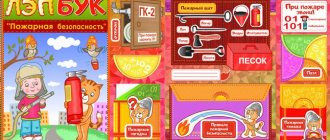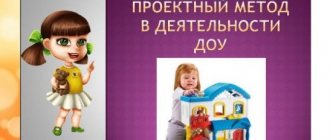DEFINITION
Fairytale therapy is a method of psychological correction that helps develop a harmonious personality and solve individual problems. The instrument of this therapy is a fairy tale, which allows, using the example of heroes, to trace the characteristics of behavior and actions, and to analyze a specific life situation.
Fairytale therapy began to be used in isolation relatively recently, but quickly found a large number of fans among professional psychotherapists and parents. It was identified as a separate branch of psychotherapy thanks to Tatyana Zinkevich-Evstigneeva, and was later successfully used in working with both children and adults.
The essence of the method is this: the experience of conflict occurs with the help of a system of substitutes - fairy-tale characters, in whose place the child (or adult) begins to imagine himself. The plot is also important. Due to its metaphorical nature, a fairy tale becomes a powerful developmental and psychotherapeutic tool. By living certain events with the characters, the baby learns to understand their meaning and significance.
The goal of therapy is to help the child overcome anxiety and fears, correct negative character traits, and reveal abilities and inner world.
The following tasks can be distinguished:
- formation of emotional experience;
- overcoming internal contradictions;
- obtaining a sample of behavior in various situations.
Often a fairy tale becomes a means of developing personality, imagination, memory
BEST AGE
Experts advise starting to use fairy tales from the age of 2, since younger children are not yet able to carry out the simplest analysis and understand cause-and-effect relationships, that is, the work will be ineffective. And from the age of 2, it is quite possible to use simple therapeutic fairy tales to help calm the child, prevent hysteria, and provide an example of positive behavior.
At the age of 3, fairy tale therapy can be used more actively, including in combination with other art therapy methods.
DIRECTIONS
It is customary to distinguish several areas of fairy tale therapy:
- Help in difficult life situations. Using the characters as an example, you can consider alternative behavior options and reflect on what consequences each of them leads to.
- Identifying the problem the child is facing in a simple and accessible form.
- Transfer of experience. The parent does not teach the child, but shares with him his life experience and knowledge through a fairy tale.
- Development of thinking, imagination, memory. The form of work is used with children from 3 years old; parents offer not just to listen to the text, but to answer a series of questions, speculate on something, and explain the actions and characters of the characters.
- Behavior correction. With the help of heroes, the child looks at himself from the outside, sees his own negative qualities, as well as an example of how to correct them.
- Psychoprophylaxis. It is always better to avoid a problem than to fix it, and a fairy tale is a very convenient way to do this.
The advantage of fairy tale therapy is that it helps solve a wide range of problems in both children and adults.
FUNCTIONS
It is customary to distinguish the following functions of fairy tale therapy:
- The ability to quickly establish contact between the therapist and the client, regardless of the latter’s age.
- Many mental problems are hidden deep in the subconscious. A short text from a fairy tale helps to bring them to the surface and analyze them.
- Heroes will help you find a way out of difficult situations and consider alternatives.
- Fairy tales allow you to better understand yourself and get rid of internal contradictions.
- This text allows the therapist to receive all the information, even if the client (usually an adult) is trying to hide something.
Fairy tales are an excellent way to overcome phobias; they will also help to instill the skills necessary for a full life, provide an opportunity to understand what is good and what is evil, to reveal the individuality of one’s own personality, and to overcome life’s difficulties. And, what’s most convenient, parents can use this method even without professional education.
Fairy tale therapy: theory and practical application
How does fairy tale therapy work?
Fairytale therapy is designed to help a child concentrate on a certain problem, show ways to solve it, without giving strict recommendations. In each story, a certain situation that arose in the life of a child is played out, the characters in the story have the characteristics of real people, and the conflict that arises always has a logical resolution. Fairytale therapy establishes connections between fairy-tale events and behavior in real life, transfers bookish, magical meanings into reality. The main principle of the method is the spiritual, holistic development of the child’s personality, caring for his soul.
A fairy tale not only teaches, but also heals.
Fairytale therapy helps children who have lost their parents. The child meets himself in a fairy tale, with a good, best expression of himself. Learns from himself fabulous good deeds, learns to be happy.
Fairytale therapy in kindergarten and at home
Collective writing of fairy tales is very useful. For young children, this is an exercise in interaction; for teenagers, it is a way to understand themselves and their peers. Using the example of a jointly created fairy tale, you can understand who plays what roles in the team.
It is useful for parents to compose together with their child, because at such moments you begin to speak in a common language and can find out the child’s hidden thoughts and desires. By hiding them behind symbols and metaphors, the young storyteller frees himself internally, and a caring and attentive parent can unravel the desires and subconscious aspirations of the child.
The fairy tale stimulates creative thinking and develops a sense of humor in parents and children. And by depicting magical characters on paper or plasticine, the child practices modeling, writing and drawing skills, develops perseverance and attentiveness.
What kind of fairy tales are there?
All fairy tales can be divided into four groups according to the problems they raise:
- Difficulties in communication.
The fairy tale plays out conflicts, grievances, and disagreements that arise in a child in the yard, at school, in kindergarten, and within the family circle.
- Inner experiences.
The effect of a magic mirror arises, which allows you to carefully examine your as yet unknown inner world, level out emerging contradictions and complexes, and answer the question “what’s wrong with me?”
- Fears.
It is important for parents to know what their child is afraid of and, most importantly,
how he is afraid of it
. If fear slows down development, takes away emotional strength, and becomes an insurmountable obstacle to personal growth, then the child needs help. - Age-related difficulties.
Each age has its own critical moments associated with the child’s awareness of his new role. For example, accepting oneself as an independent person in preschool age, or problems related to learning in primary school age. All this can be said through a fairy tale.
Types of fairy tales in fairytale therapy:
- Artistic tales.
The plots that are closest to ordinary folklore are universal and are rarely adapted to a specific child. They are mainly used as maintenance therapy and are not used to correct more serious problems. The main principle of artistic fairy tales is “do no harm.”
- Psychocorrectional tales.
They imply a gentle correction of certain character traits and behavior. Often used for children with hyperactivity and aggressive manifestations. These tales must be studied individually by a psychologist.
- Psychotherapeutic tales.
They are used when working with children from 3 to 8 years old after a superficial study of the child’s problems. It is psychotherapeutic fairy tales that are the main tool for correcting fears and phobias.
There are also universal psychotherapeutic fairy tales that can be used without adaptation by a psychologist to a specific child. In this case, the factor that increases the effectiveness of the fairy tale is personalization: the main character of the fairy tale is the child himself. Usually, ready-made collections of therapeutic tales are used on the most common problems (fear of the dark, greed, etc.).
- Meditative tales.
They are distinguished by the absence of conflicts and evil heroes. They are designed for relaxation after psychological stress. They are the most difficult type in fairy tale therapy because they are not aimed at solving a specific problem. Meditative fairy tales are often told in the format of a dialogue with a child, which helps the psychologist-storyteller change the plot based on the child’s obvious or hidden needs.
- Didactic fairy tales.
Often used for preschoolers and children of primary school age. Their purpose is to teach the child something new in an interactive way. Used in primary schools as part of the curriculum. With the help of such a fairy tale, you can work with your child on this or that situation, behavior pattern, and system for finding a solution.
For children and adults
Fairytale therapy is used in kindergartens, schools and rehabilitation centers. Based on fairy tale therapy, collections of therapeutic personalized fairy tales are created. Fairy tales are used to treat various fears in children, excessive aggressiveness, laziness, hyperactivity, reluctance to go to kindergarten, nervous tics, fears, enuresis and anorexia.
Fairytale therapy resolves conflicts with parents, eliminates communication difficulties, learning difficulties, aggressiveness in relationships, feelings of inferiority, loneliness, and self-doubt.
But fairy tale therapy is useful not only for children. Remember your favorite magical story from childhood, tell it to yourself, smile, close your eyes, relax... Do you feel it? This is how fairytale therapy works. It’s not for nothing that fairytale therapists advise carrying a pocket book with your favorite fairy tale. After all, how good it is to read a good, time-tested fairy tale after a hard day at work. Even if it’s “Kolobok”.
“What is this fairy tale about?” you ask. It teaches that everyone has a purpose in this world and shows what can happen when we give up our path.
In all fairy tales, the dialectic of the world is visible: without evil there cannot be good, and vice versa. This teaches a very important thing - to perceive the world as it is.
The language of fairy tales opens the way for a visual, figurative and visually effective comprehension of the world of human relationships, which is quite adequate for any age-related mental characteristics.
Fairytale therapy in speech therapy and defectology
Elements of fairy tale therapy can be used in games and exercises aimed at:
- formation of sensory representations based on various models of perception (visual, tactile);
- development of general speech skills; development of auditory attention; development of word formation;
- training in the use of the genitive case;
- formation of simple phrases (for example, games with a set goal for children; with increasing/decreasing voice strength).
It is very difficult for sounds to be automated even in children with a strong nervous system, little sensitivity, and who do not show much interest in what surrounds them. They don't seem to care what their pronunciation is. And lack of desire means lack of conscious control. Such children may not have any difficulties with producing sounds or their initial automation, but introducing sounds into spontaneous speech is sometimes a difficult task for both the speech therapist and the child himself.
You can solve the problem with the help of “fairy tales for automating sounds,” which belong to the category of speech therapy. In speech therapy work, all new technologies can be successfully combined with fairy tale therapy techniques, where correctional tasks for the development of all components of speech are solved.
A fairy tale is an effective developmental, correctional and psychotherapeutic tool in working with children.
In these and many other cases, a fairy tale is introduced as an unobtrusive means of identifying the listener’s “sore spot”, demonstrating to him new ways of interacting with reality, ways out of the current difficult situation, and showing the other side of what is happening.
Fairytale therapy in psychology
Psychologists use therapeutic fairy tales to work in three areas:
- Diagnostics
, that is, determining the main life scenarios of a person, characteristics of behavior and perception of the world, abilities, talents.
- Actually therapy
— solving psychological problems, consolidating new patterns of behavior and reactions.
- Prognostics
- assistance in understanding the influence of behavior in the present on future life events.
The fairy tale therapy method can provoke powerful and effective work of the subconscious.
The choice of genre focus is based on the age, interests of the listener, and the nature of his difficulties. It is important that the metaphor is correctly selected in the work - the effectiveness of therapeutic techniques depends on it.
We are accustomed to viewing a fairy tale as a kind of entertaining activity, a way to broaden our horizons and convey a moral. But psychology identifies a much larger number of functions that a fictional story, told in a certain way, performs:
- Solving problems facing people.
The story told shows a problem identical to the real one and ways to overcome it. The listener subconsciously associates the fictitious situation with his own and analyzes the possibility of using the proposed options.
- Development of thought processes.
For children 3-12 years old - listening, analysis, subsequent discussion of the work, identifying positive and negative characters - these are tools for improving memory, attention, and logical thinking. In addition, a fairy tale introduces a child to concepts, phenomena, and words previously unknown to him, also acting as a method of speech development.
- Transfer of true values.
Through fairy tales, generations of people pass on to their descendants the concepts of good and evil, honesty, responsibility, love and justice. Invented heroes teach decency, caring for loved ones, and achieving goals.
- Revealing forgotten, distant childhood traumas
deals with fairy tale therapy for adults - through the analysis of a person’s favorite work or a story invented by him.
- Emotional saturation.
Sincere empathy for the characters in the story allows you to remove the existing block on certain emotions (“boys don’t cry”, “you can’t be so angry” and other stereotyped attitudes imposed by society), fully experience them, name and accept positive and negative feelings.
- Behavior change
— therapeutic fairy tales of a correctional direction gently turn children’s behavioral reactions towards more effective, safe, and acceptable ones.
Working using fictional stories is an effective tool for influencing the inner world of adults and children. Each age period requires an individual approach, as does each individual case.
We can highlight the basic principles of constructing therapeutic activities
with children of any age:
- Emotional transfer of the content of the story to adults.
When listening, the child should see the narrator’s face, gestures, and eye expression.
- No too long pauses.
The situation in the allegory should be “open”, that is, it should suggest the possibility of several solutions.
- A problem that is relevant to a child is encrypted with images and metaphors.
Correct psychological fairy tales for children contain situational questions that encourage the listener to independently trace the causes and consequences of the described actions.
- A clear distinction between positive and negative characters.
Typically, fairy tale therapy for preschoolers works in several directions:
- Reading
(narration)
of the work. - Artistic depiction
- drawing, modeling, appliqué making.
- Diagnostics.
- Making up your own story.
- Creation of puppet characters.
- Theatrical performance.
Read other materials on preschool education:
Methodological assistance to preschool teachers
How to read aloud to a child? Improving reading skills
Methodology for diagnostics, development and correction of visual perception in preschool children
10 games for kindergarten: learning to be friends and help
Both mind and heart
All methods are used separately or in combination, in accordance with the age characteristics of the listeners. Thanks to a fairy tale, a child learns about the world not only with his mind, but also with his heart. And he not only learns, but responds to events and phenomena of the surrounding world, expresses his attitude towards good and evil - this is how the personality is corrected, the emotional and behavioral reactions expand.
The first ideas about justice and injustice are drawn from fairy-tale images. Fairy tales allow a child to experience courage and resilience for the first time. The process of fairy tale therapy gives the child an alternative concept that he can either accept or reject. One child is more inclined to compose and tell stories, another cannot sit still and needs to be constantly moving. The third one likes to make something with his own hands, the fourth one loves to draw...
By combining various techniques of fairy tale therapy, you can help each child live through many situations, the analogues of which he will encounter in adult life. And significantly expand his worldview and ways of interacting with the surrounding reality and other people.
TYPES OF FAIRY TALES
Let's get acquainted with the classification of fairy tales proposed by Zinkevich-Evstigneeva. The information is presented in table form.
| Fairy tale form | a brief description of |
| Artistic | These are traditional, in our understanding, folklore and original fairy tales, the plot of which may contain elements of other forms. |
| Didactic | Created by teachers for simplified presentation of educational material. It is most often used in working with preschoolers and primary schoolchildren, while teenagers are encouraged to write such texts. |
| Meditative | They help you relax and relieve psycho-emotional stress through the accumulation of positive experience. Often reading is accompanied by listening to soothing music or sounds of nature. |
| Psychotherapeutic | They help you understand the events of the world around you, they are often very insightful, aimed at personal growth, and allow you to see positive aspects and qualities. |
| Psychocorrectional | In an unobtrusive form they influence behavior, most often used in relation to adolescents 11-13 years old and adults, they help solve problems of aggressive and ineffective behavior. It is not necessary to discuss or act out such a fairy tale; often it is enough to let it be read and thought about on your own. |
The genres used in such therapy are diverse; they are not always fairy tales. Here are the main ones:
- epics, myths, legends, sagas - these 4 genres are best suited for working with teenagers;
- fables (the moral is formulated quite clearly; you can use texts not only by Krylov, but also by Aesop and La Fontaine);
- parables (often contain important life lessons, are dedicated to a specific problem and can be used to work through it).
Sometimes it is acceptable to use modern genres, for example detective stories, science fiction - the main thing is that the genre matches the child’s taste.
Results of using fairy tale therapy
We draw our first ideas about good and evil, justice and deception from fairy tales. Good stories and beloved fairy-tale characters help young children become brave and resilient. Fairy tale treatment provides its patients with an alternative behavioral strategy that they can accept or reject.
We are all different, one child is inclined to fantasize, another loves to run and jump, another sits for hours sculpting animals or constructing a dollhouse. By combining various techniques, an experienced fairytale therapist can help each child experience and understand many situations that he has already encountered or will inevitably encounter in adulthood.
We are accustomed to viewing a fairy tale as entertainment, as a way to broaden our horizons, but in psychology a fairy tale is given a much greater role and significance, because it:
- can solve many life problems and answer internal questions;
- develops thought processes, improves memory, logic, attention;
- is able to convey from generation to generation the concepts of justice, kindness, love, fidelity;
- makes it possible to identify forgotten childhood psychological traumas;
- saturates the personality emotionally, causes sincere feelings;
- capable of changing human behavior.
VARIOUS FAIRY TALE THERAPY METHODS
Working with fairy tales can be combined with other forms and methods of art therapy, which will help not only correct the child’s behavior, but also arouse his keen interest and improve his mood.
So, first of all, sand therapy is harmoniously combined with a fairy tale. Sand can become a kind of environment for recreating a magical world. While playing with sand, the child creates his own reality, in which he feels comfortable and happy; during the game, thanks to the so-called “fairy-tale intuition”, the child manages to find a way out of a difficult situation.
Drawing a fairy tale is one of the methods of fairy tale therapy. Using pencils, paints, even plasticine or clay, the child expresses his own emotions about the text he heard. Another form of work is independent writing (composing) of a fairy tale, in which the child can completely come up with the text, propose an alternative scenario for the development of events in a ready-made fairy tale, and figure out what happened after the conclusion - for example, how the fates of the heroes of “Teremka” turned out or what they began to do the old man and the old woman from “The Tale of the Goldfish”, once again finding themselves “at the bottom.” This will be interesting for preschoolers aged 5-6 years and older children.
The next option is dramatization, staging of fairy tales, their staging, which helps children more deeply get used to the character’s image and enrich their emotional and behavioral experience. At the same time, you should avoid tedious memorization of the role and strict adherence to the text - in such classes, improvisation is much more important. It is this form of work that will help you realize your own shortcomings using the example of the character being portrayed, find out how you can overcome them, and do it.
Staging puppet shows is also useful, allowing you to develop your child’s speech, imagination, communication skills and fine motor skills. In order to “revive” the doll, the child observes certain forms of behavior from the outside, sees what they lead to, and draws his own conclusions. Also, in the process of doll therapy, he gets the opportunity to express those feelings and emotions that are inaccessible to him in real life or are suppressed. Older children (6 or 7 years old) can be encouraged to make dolls themselves, a process that helps them relax.
Another technique is the “master of fairy tales” proposed by Zinkevich-Evstigneeva. According to the author, there are 10 main archetypes (for example, a road, a state, a crossroads), using which you can create 50 fairy-tale plots, which is what the child is asked to do. “Master of Tales” is a deck of 50 cards, each of which has its own meaning. Using them, you can create your own oral works.
These methods are easy to use in homework; in this case, mothers and fathers and other relatives become spectators of “theatrical” productions or puppet theaters.
What problems can fairy tale therapy help you cope with?
Collective writing of fairy tales will help preschoolers get comfortable in a group, learn to make friends with their peers, and teenagers - understand themselves and their classmates. A jointly created fairy tale will reveal which of the children plays what roles in life, and will provide an opportunity to look at their character and behavior from the outside.
If parents compose a fairy tale together with their child, this makes it possible to speak the same language, to find out the child’s hidden thoughts, dreams and aspirations. A fairy tale will develop creativity and a sense of humor in both adults and children.
If you ask your child to draw or mold magical characters from plasticine, you can effectively practice the skills of writing, modeling, drawing, and help the young storyteller develop motor skills, perseverance and attentiveness.
Fairytale therapy copes with such children's problems as difficulties in communication and learning, as well as loneliness, low self-esteem, laziness, fears, aggression, excessive activity, psychosomatic diseases, and will help determine the reason why a child refuses to go to kindergarten or school.
Using the language of fairy tales, adults comprehend the nuances of interpersonal relationships and get to know themselves better. A magical story helps you take a fresh look at the world around you and improve your quality of life.
Fairy tales in psychotherapy are divided into 4 main groups according to the problems they address:
- For difficulties in communication
The fairy tale tells about the conflicts, quarrels, and grievances that a child has in kindergarten, at school, in the family, and on a walk.
- During age crises
the child seems to get used to his new role, to a new position (for example, to independence in kindergarten); all these moments can be played out in a fairy tale.
- With internal experiences
in the fairy tale, the hero is shown - the baby himself, his inner world is examined, complexes and contradictions are revealed, so that the child can answer the question: “What’s wrong with me?”
- For worries and fears
It is necessary, with the help of a fairy tale, to determine what the baby is afraid of, what prevents him from developing, what takes energy.
TIPS FOR PARENTS
With the right approach, using fairy tales you can solve the following problems:
- laziness;
- sloppiness;
- deception;
- aggression;
- reluctance to go to kindergarten.
In case of serious phobias or the appearance of a new family member, it is better to seek the help of a professional.
Let's look at how a mother can use elements of fairy tale therapy at home for her preschooler. Often, it is not enough for a child to simply listen to the text of a fairy tale. It is important that his parents discuss it with him and help him understand the lessons that the plot and characters provide.
By reflecting with your son or daughter on each fairy tale you read, you can form a so-called “bank of life situations” - that is, what you can and cannot do in various cases. The more often such discussions occur, the faster the child will gain the necessary life experience. In this way, the parents will prepare him for an independent future life and help him form a value system.
If a child asks his mother to tell the same fairy tale several times, the request should be fulfilled, since she speaks of the importance of this story for the baby.
WHICH TALES TO CHOOSE?
Let's look at examples of fairy tales and requirements for them. For preschoolers and children 7 years old, the following options are suitable:
- household (“Ryaba Chicken”, “Kolobok”, “Porridge from an Axe”);
- magical (“Morozko”, “Puss in Boots”);
- heroic (“Dobrynya and the Serpent”, “Ilya Muromets”);
- instructive (“The Fox and the Crane”, “Goldfish”).
These can be both oral folk and original works. The main thing is that they meet the following requirements:
- The characters were understandable and interesting to children. An excellent option if the actor is a peer. Age specifics should also be taken into account: for 2-3 years old, animal heroes are preferable; at 4 years old, an element of magic should be introduced; at 5 years old, fairy tales already become the main ones.
- Characters should be clearly divided into positive and negative. Due to their age, it is still difficult for children to judge that an honest and kind person in certain circumstances does not always act well. Therefore, everything in the selected material should be accessible and unambiguous.
- The text itself should be chosen that is interesting to the child, close to him in subject matter and hobbies.
- The topic must be relevant. The lesson is conducted for a specific purpose, to solve some problem of the child (aggression, shyness, phobias), the material must be selected in such a way as to highlight these aspects.
- Availability of interchange. The problem must be solved, since this is the only way the child will receive a specific algorithm of action.
If she has imagination, mom can write a fairy tale herself, but you can use ready-made works by psychologists.
LESSON STRUCTURE
When conducting a fairytale therapy class, the following elements must be present:
- An immersion ritual that helps create the necessary mood. This could be listening to a cheerful tune that your child loves.
- Getting to know the text. It is advisable for the mother to tell a fairy tale; if this is not possible, expressive reading or listening to an audio recording with professional speakers is acceptable.
- Discussion. A conversation about what has been heard, allowing you to understand the lesson of the text, evaluate the actions of the characters, and identify the cause-and-effect relationship “action-consequence”.
- Art therapeutic element. Drawing heroes, creating a fairy-tale world in a sandbox. It is best to use a child's favorite activity.
- Exit ritual. Close your eyes, count out loud to three and leave the fairy-tale world, find yourself in the real one.
- Summarizing. A short summary of what was learned in class. At this stage, it is very important to avoid the use of moralizing by an adult, imposing the “correct position”.
The structure is not mandatory; you can modify it if desired. Such classes can be conducted both individually and in group form.
SOLVING SPECIFIC PROBLEMS
Let's consider how a mother can use fairy tale therapy to solve a number of important problems in the upbringing and development of a child.
| Problem | A fairy tale aimed at solving it |
| Eating whims, refusal of healthy foods | A fairy tale from the perspective of vegetables who talk about their own benefits. You can also include here a monologue of candy, which will appear as a negative character and talk about the harm it brings. |
| Sloppyness, the child does not see the point in order and does not want to keep his things clean | A fairy tale about a country of slobs, whose inhabitants do not maintain cleanliness and order. This leads to problems and difficulties (they cannot find the right thing at a crucial moment, the necessary magic item turns out to be broken or dirty). |
| The child is aggressive and often hits younger children for no reason. | A fairy tale about a bear cub, who wanted to show everyone that he was big and strong, offended other animals. As a result, no one became friends with him. One day he came to the aid of the little bunny and realized that his strength should be used for good, helping the weak. |
| The child is unsure of himself, timid, and is considered physically weak | The fairy tale “The Oak and the Blade of Grass” will help: in the clearing there grew a mighty oak tree and a thin blade of grass, which even the smallest gust of wind pressed to the ground. The oak tree laughed all the time at the weak blade of grass, but it grew, not paying attention to the ridicule. One day a hurricane passed through, so powerful that it uprooted an oak tree, and a blade of grass, although bent to the ground, was not damaged. |
The second option for working with fairy tales is texts dedicated to a specific child. As a rule, children are very interested in hearing about themselves. In such fairy tales, the baby is endowed with certain character traits that the parent wants to instill in him. For example, if a baby categorically refuses to go to bed in the dark, in the plot of the fairy tale he should appear as a brave hero who is not afraid of the night.
Fairytale therapy is a gentle method of psychotherapy that allows you to solve serious problems in a gentle manner. It is available for use at home. The main difficulty is the correct choice of material. This issue should be approached responsibly; if desired, you can compose a fairy tale yourself. This method is ideal for children, since the work is carried out on material accessible to preschool age, which, however, does not reduce its effectiveness.
Fairytale therapy - how does this method work?
Fairytale therapy is a method that helps a child (or adult) concentrate on their problem. When used skillfully, fairytale therapy can provide the psychologist with clear routes for correcting behavior and treating depressive conditions in patients.
Each fairy-tale story plays out a specific situation that happened in the patient’s life. The characters are endowed with the characters of real people, and a conflict situation always has a logical solution. This therapy makes a connection between the events that occur in a fairy tale and reality, and transfers magic into everyday life.
The main goal of fairy tale therapy is the development of personality and care for the soul. The kid meets the best version of himself in a fairy tale, learns from the hero to do good deeds, to be happy and fair.
Fairytale therapy methods
Fairytale therapy as a correction method is very effective and capable of solving serious psychological problems . The reason is the positive reaction of people to the fairy tale, regardless of age. Most patients do not experience internal rejection or protest.
Psychologists identify four basic directions in this technique:
- Diagnostic. Helps to identify the scripts that a person uses when solving life situations. Using diagnostics, he determines character traits, personality strengths and weaknesses, talents, life positions, etc. By conducting diagnostics, the specialist determines the root of the client’s problems.
- Correctional. Helps a person create a harmonious image of himself, tune in to a healthy pattern of behavior, and correct negative patterns of perception of the world.
- Prognostic. Helps a person determine what results his behavior and current life position will lead to.
- Developmental. Helps relieve emotional and muscle tension, reduces anxiety, develops imagination, and facilitates adaptation to new conditions.
The effectiveness of treatment with fairy tales lies in the fact that most people perceive the fairy tale very positively, and there is no rejection or internal conflict. At the same time, there is a deep impact on the spiritual and moral level.
Books on fairy tale therapy
1. “Author's fairy tale therapy”, Gnezdilov A.V. The book by the famous St. Petersburg doctor and storyteller contains his fairy tales that help people cope with difficult situations for them - family problems, loss of loved ones, discover new strengths in themselves and find inner harmony. (download)
2. “Fairy tales and tips”, Kozlova E.G. skazki_i_podskazki
This collection contains 350 problems (with tips, solutions and answers) that were offered in math circle classes and solved by children. The book will be interesting and useful to schoolchildren, their parents, as well as mathematics teachers and students of mathematics departments of pedagogical institutes.
3. “Workshop on fairy tale therapy”, Zinkevich-Evstigneeva T.D. praktikum_po_skaz_ter
The guide to fairy tale therapy is addressed to psychologists, teachers, psychotherapists, doctors, philologists, parents and all those who feel close to the fairy tale genre.
4. “Fairy tales and fairy tale therapy” Sokolov Dmitry skazki_i_skazkoterapia
This book is one of the first and most nimble signs of fairy tale therapy, a popular and rapidly developing area of practical psychology. Unlike “serious” textbooks, it lays out the basics of the approach in an easy and colorful way.
The book contains fairy tales that have independent artistic value, which over the past ten years have been loved by many children and adults who met them through the first editions of this book, as well as through magazines, audio cassettes and puppet shows.
Fairytale therapy for children 3-5 years old
At this age, children begin to feel like a separate person. They may experience whims, hysterics, and night terrors. Treatment with fairy tales will help you cope with all these problems.
A fairy tale about the sun - for hyperactive and capricious children.
In a galaxy far, far away, many millions of light years away from us, there lives the Sunshine family. Big Sunny is dad, smaller Sunny is mom, little Sunny is son and tiny Sunny is daughter. They all live as a friendly family. They read together and come up with strange stories.
Each of them, from birth, has his own job, which he performs constantly without breaks or vacations - they illuminate and warm the planets that revolve around each of them. And everything would be fine, but Sonny Sunny was famous for his capriciousness: he is capricious, says “I don’t want”, “I won’t”...
Does this happen to you?
Mom and dad don’t know what to do, how to explain to their son that such behavior is not appropriate for Sunny, because being Sunny is a great honor, but at the same time, it’s also a great responsibility—after all, life on the planets depends on you. Where there is responsibility, there is no place for harm.
Sonny Sunny was capricious today too:
- I don’t want to shine from the right, I don’t want to stand in one place for so long, I don’t want to get up so early... I’ll take it and won’t shine on the planet Cyprana, where living beings live. I'll turn away!
And Sonny Sun turned away from the Cyprians, and it became dark and dark there. All the residents were scared. What will happen to them next? If the sun doesn’t shine, then plants, vegetables and fruits don’t grow, and when there’s no harvest, then there’s nothing to eat. And without food, as everyone knows, a living creature dies. Little children from Cyprus began to cry, because they were very afraid of the dark - it seemed that monsters or something terrible would attack them. But they didn’t know that in fact, almost all monsters are also afraid of the dark.
The Cypriots did not wait for death, they gathered everyone for a meeting and began to talk about how they should continue to live and what to do so that the Son of the Sun would shine on their planet again. These Cyprians are strange creatures. They had bulging eyes on their chin, a breathing and sniffing nose on their stomach, and a talking and eating mouth on their back. And they thought of solving the problem like this: they need to film a request to Sunny on a video camera. To do this, they took the last lanterns, gathered the children and all together told their son Sunny how hard it was for them to live without him. The children, crying, told about their fears. Then, the bravest ones launched a rocket and flew towards the Sun. We flew for several days to convey the request.
Sonny Sunny watched the recording (he loved watching cartoons), but this recording turned out to be sad. Sunny felt ashamed of his behavior and whims. He even burst into tears along with the Cyprian children, who were so afraid of the dark.
Since then, Sonny Sun has shone on all the planets in his system and has not been capricious, but obeyed his father and mother.
What a great guy, Sonny Sunny!
Are you also not capricious and obey your parents?
The Tale of the Tiger Cub - a story from psychologist Anna Kutyavina that will help shy children find friends
In one house there lived a small but very cheerful tiger cub. He loved to play and jump, run around the yard with his animal friends. And he had many friends: a fox, and a top, and a gray little hare, and a teddy bear, and even a prickly hedgehog. The tiger cub loved everyone, he happily told everyone funny stories, gave everyone rides on his tricycle and treated them to cotton candy. And everything would be fine, but only a tiger cub could sometimes get too playful and hit a friend or girlfriend, bite or pinch painfully. He thought it was fun and funny, but for some reason his friends were offended. Then, seeing their sad faces, the tiger cub began to bite and scratch them even harder - so that they would cheer up and begin to be friends with him again. But, of course, the friends only became more offended by the Tiger Cub and ran away from him.
And one day the Tiger Cub, as usual, went out onto the playground to play, and saw that none of the animals came up to him, or even said hello. On the contrary, everyone hurried to quickly run away from the site. And the Tiger Cub was left alone.
- I don’t want to be alone! - Tiger Cub growled. - Don't want!
The young Moon had just appeared in the sky. She looked at the Tiger Cub, felt sorry for him and said:
- So come to me! I have company here for you - my two sons.
The tiger cub nodded, Luna stretched out her hands to him and took him high, high. There, on the Moon, Tiger Cub immediately felt cold and very dark. He got scared and cried.
“Why are you crying?” asked a voice from the darkness.
- Because I'm alone. Nobody needs me, and no one wants to play with me,” sighed the Tiger Cub. And he immediately perked up. - And who are you?
- And I am Morpheus, son of the Moon. And with me is Orpheus, my younger brother.
The tiger cub looked back and saw two silhouettes.
- Do you really need someone? – the voice of the younger brother was heard. - We are on our own. And we don’t need any friends for nothing.
- Yes, we are the most important here. We can watch you and laugh at how strange you live,” Morpheus grinned. – The most important thing is the night. A time when everyone is asleep and we rule the universe. We, the sons of the great Moon!
And friends, in my opinion, only interfere with our great mission,” added Orpheus.
“I know how to play the harp, and my music makes you all fall asleep.” And then I transfer power over you to my brother Morpheus.
- What are you talking about, friends? This is great! – The tiger cub jumped up. - Without them, there’s no way!
“Ha-ha-ha,” Morpheus laughed. - And where are your friends now?
The tiger cub thought. Meanwhile, the brothers went to inspect their possessions.
- Tiger cub, I know how to help you! – squeaked a thin voice on the right.
The tiger cub turned and saw the mouse.
- Don’t look that I’m so small. “I have the power to change my appearance,” the mouse smiled. - I will give you a magic wand, and with its help you can bring back your friends!
- Great! – Tiger Cub perked up. “Should I just hit them with a stick and they’ll play with me again?”
“It’s not that simple, little Tiger Cub.” You can't change your friends. But it is up to you to regain their trust. And with a wand you will have to touch your hands every time you want to scratch or hit a friend.
“Okay, I’ll try,” the Tiger Cub smiled and took the gift. - Thank you, Mouse!
A minute later, the Tiger Cub again found himself on the platform in his yard. A small stick glowed in his hand.
"Miracles!" - thought the Tiger Cub and went to bed. In a dream, he saw Morpheus and Orpheus, so lonely and cold... And he felt so sorry for them!
The next morning the Tiger Cub was the first to jump onto the platform. Little by little the animals began to arrive. The Tiger Cub approached each one and asked for forgiveness for past offenses, promising never to scratch or bite again. The animals looked at him incredulously at first, and then again accepted him into their games.
Since then, Tiger Cub always plays happily with his friends. And when he suddenly wants to pinch or hit someone, he immediately takes out his magic wand, and it reminds him of the magical flight to the moon.
The fairy tale “Why Seryozha is not afraid to fall asleep on his own” - a therapeutic fairy tale for overcoming night fears
Little Seryozha was lying under the blanket and trembling all over. It was dark outside. And it was dark in Seryozha’s room too. Mom put him to bed and slept in her room. But Seryozha could not fall asleep. It seemed to him that there was someone in the room. The boy thought he heard something rustling in the corner. And he became even more scared and was even afraid to call his mother. Suddenly a bright celestial star landed right on Serezha’s pillow.
“Seryozha, don’t tremble,” she said in a whisper. “I can’t help but tremble, I’m scared,” Seryozha whispered. “Don’t be so afraid,” said the star and illuminated the whole room with its twinkling. - Look, there’s no one in the corner or under the closet! - Who was that rustling? “No one rustled, it was fear that got into you, but it’s very easy to drive it away.” - How? Teach me,” the boy asked the bright star. - There is one song. As soon as you get scared, start singing it right away! - So said the star and sang:
A terrible little fear lives in the dark forest, He lives by the swamp in the dark bushes. And the terrible little fear does not appear from the forest, The fear of the light is afraid - it sits in its bushes. And he is also afraid of laughter, a terrible little fear. As soon as you laugh, the fear disappears in the bushes!
First, Seryozha listened to the star’s song, and then he sang with her. It was then that the fear disappeared from Seryozha’s room, and the boy fell asleep sweetly.
Since then, Seryozha is not afraid to fall asleep in a room without his mother. And if fear suddenly comes to him again, a magic song will help!
“The Tale of the Sad Plate” - a story from Maria Shkurina about problems with food in preschoolers
Once upon a time there lived a girl, Katya. Katya was a good girl: kind, polite, caring. Only Katya didn’t like to eat. And what her mother didn’t cook for her: soups, porridge, cutlets with pasta - but Katya had one answer to everything: “I don’t want to, I won’t.”
Once the grandmother gave the girl a new plate. Beautiful, pink. He says: “Here, Katenka, a new plate for you, it’s not an ordinary one. Loves it when kids eat well.” Katya thanked her grandmother for the gift, but she didn’t eat any better.
Once Katya’s mother put mashed potatoes with a chicken cutlet on a new plate, and she left the kitchen to run errands. Katya sits in front of a plate, does not eat, but only spreads mashed potatoes on it with a fork. Suddenly the girl hears someone crying. Katya looked around, but couldn’t understand anything. She was even a little scared, and then she grew bolder and asked:
-Who is this crying? - This is me, a plate. I'm crying. - Why are you crying? - asks the girl. “I’m upset that you don’t eat well and never see my smile,” the plate answers. - Do you know how to smile? – Katya was surprised. - Of course I can. “You’ll eat all the food until the day and you’ll see for yourself,” answered the plate.
The girl immediately took up her fork and ate the entire cutlet and mashed potatoes. And as soon as the bottom of the plate became empty, Katya saw that she was really smiling and was no longer crying.
Since then, Katya always ate what her mother cooked, and the plate always smiled gratefully at her for it.









